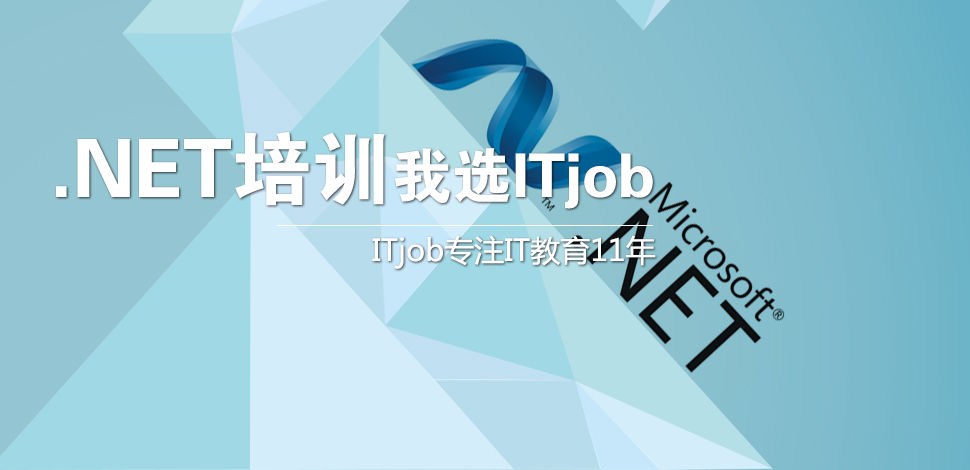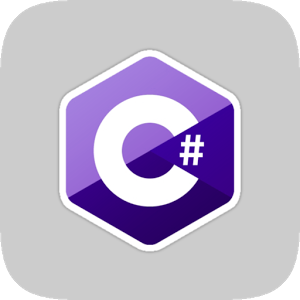Detailed introduction to WSD
The Web began as a simple website (a platform for information intermediaries and information release). With the rapid development of the Internet, Intranent, and Extranet, it has developed into a major platform for various applications. The Web has had a profound impact in the fields of commerce, industry, banking, finance, education, government, etc. This is due to the services of Web standardization, loose coupling, language neutrality, platform independence, and openness. Web services require the support of four major technical standards: XML (Extensible Markup Language), SOAP (Simple Object Access Protocol, WSDL (Web Services Description Language) and UDDL (Unified Description, Discovery and Integration Protocol). Among them, UDDI, SOAP and WSDL are based on XML, therefore, XML occupies an important position in the Web system. 1. The first version of XML Extensible Markup Language XML was promulgated by the World Wide Web Consortium (WSC) in February 1998. XML is derived from the Standard General Markup Language SGML. , XML, as an extensible markup language, has now become the de facto standard for information description. Therefore, XML can
1. Details of the advantages of XML in Web applications

Introduction: The beginning of the Web was a simple website (a platform for information intermediaries and information release). With the Internet With the rapid development of Intranent and Extranet, the Web has developed into a major platform for various applications. The Web has had a profound impact in the fields of commerce, industry, banking, finance, education, government, etc., thanks to Web standardization, loose coupling, language neutrality, Services with characteristics such as platform independence and openness. Web services require four major technologies: XML (Extensible Markup Language), SOAP (Simple Object Access Protocol), WSDL (Web Services Description Language) and UDDL (Unified Description, Discovery and Integration Protocol). Standard support. UDDI, SOAP and WSDL are based on
##2. Detailed introduction to XML encryption and XML signature

##3.
XML Schema - Description of WSD Introduction: Web Services Description Language (WSDL) provides a way to describe Web services ( A simple approach, mostly using SOAP. WSDL allows you to describe services and interfaces provided by the SOAP standard. For example, you can create a WSDL file that describes the services provided by a server and then distribute the file to Ws that require these services.
Introduction: Web Services Description Language (WSDL) provides a way to describe Web services ( A simple approach, mostly using SOAP. WSDL allows you to describe services and interfaces provided by the SOAP standard. For example, you can create a WSDL file that describes the services provided by a server and then distribute the file to Ws that require these services.
4.
Tell you in detail why XML is important for Web services ##Introduction: Web services are often described from the perspective of its component technologies. SOAP, UDDI, WSDL, xml and HTTP each form part of the Web service system, and they all play an important role. Let us look at the contribution of XML technology to the Web services platform.
##Introduction: Web services are often described from the perspective of its component technologies. SOAP, UDDI, WSDL, xml and HTTP each form part of the Web service system, and they all play an important role. Let us look at the contribution of XML technology to the Web services platform.
5. C# Entity class serialization and deserialization 2 (DataContractSerializer)
 Introduction: First of all, there are a few points mentioned above. If there is WSDL at the end of the request URL, you need to call the WebServiceURL style example: http://ip:port/navigable/webservice/loginSerice ?wsdl or .wsdlwsdl (Web Services Description Language) Network Service Description Language calls WebService and uses POST request soap string by default. Use common AFN
Introduction: First of all, there are a few points mentioned above. If there is WSDL at the end of the request URL, you need to call the WebServiceURL style example: http://ip:port/navigable/webservice/loginSerice ?wsdl or .wsdlwsdl (Web Services Description Language) Network Service Description Language calls WebService and uses POST request soap string by default. Use common AFN
6. C# Basic Series: Linq to Xml read and write xml
Introduction: Preface: There are many ways to operate xml, but in terms of frequency of use, the one used most by bloggers is Linq to xml method, I think it is very convenient to use, and it can complete simple xml reading and writing with just a few methods. A project I worked on before had a very abnormal requirement: the C# project called a WebService written in an unknown language, and then adding a service reference always failed, and dynamically calling through a proxy always reported an error. In the end, there was no way, by sending The original WebRequest request directly gets an xml file returned by the other party. Friends who have paid attention to the wsdl file of webservice should know that this is an xml file generated by the system, which is a bit complicated. I have studied half of it 7. asp.net web.config encryption and decryption method Introduction: You can also use the aspnet_regiis.exe command line tool to encrypt and decrypt Web.config files In the configuration section, you can find this tool in the "%WINDOWSDIR%\Microsoft.Net\Framework\version" directory. 8. C++ Determine whether the machine has a .Net environment ##Introduction: You can determine whether there is a .net environment folder under the application folder to solve the problem. int main(int argc, char* argv[]) { char winDir[256]={0}; GetWindowsDirectory(winDir, 256); //strcat(winDir,"\\Microsoft.Net\\"); printf ("%s\n" ... Webservice working principle and examples ##10. How Web Service works Java: The WSDL file format of WebService is different, what is the impact? phpunit fails to create SoapClient wsdl in laravel The path cannot be found python - java httpClient wsdl call failed. Can someone please take a look at my code? 


 ##Introduction: Web Service is also called XML Web Service. WebService is a lightweight independent communication technology that can receive requests passed from the Internet or other systems on the Intranet. . Yes: Software services provided on the Web through SOAP, described using WSDL files, and registered through UDDI
##Introduction: Web Service is also called XML Web Service. WebService is a lightweight independent communication technology that can receive requests passed from the Internet or other systems on the Intranet. . Yes: Software services provided on the Web through SOAP, described using WSDL files, and registered through UDDI  Introduction: Web Service is also called XML Web Service Web Service is a system that can receive messages from the Internet or other systems on the Intranet Requests passed in, lightweight independent communication technology. It is a software service provided on the Web through SOAP, described using WSDL files, and registered through UDDI. XML: (Extensible Markup Language) Extensible Markup Language. Language. For short-term temporary data processing and the World Wide Web, it is the foundation of Soap. - nusoap reports an error when generating a WSDL file
Introduction: Web Service is also called XML Web Service Web Service is a system that can receive messages from the Internet or other systems on the Intranet Requests passed in, lightweight independent communication technology. It is a software service provided on the Web through SOAP, described using WSDL files, and registered through UDDI. XML: (Extensible Markup Language) Extensible Markup Language. Language. For short-term temporary data processing and the World Wide Web, it is the foundation of Soap. - nusoap reports an error when generating a WSDL file
The above is the detailed content of Detailed introduction to WSD. For more information, please follow other related articles on the PHP Chinese website!

Hot AI Tools

Undresser.AI Undress
AI-powered app for creating realistic nude photos

AI Clothes Remover
Online AI tool for removing clothes from photos.

Undress AI Tool
Undress images for free

Clothoff.io
AI clothes remover

Video Face Swap
Swap faces in any video effortlessly with our completely free AI face swap tool!

Hot Article

Hot Tools

Notepad++7.3.1
Easy-to-use and free code editor

SublimeText3 Chinese version
Chinese version, very easy to use

Zend Studio 13.0.1
Powerful PHP integrated development environment

Dreamweaver CS6
Visual web development tools

SublimeText3 Mac version
God-level code editing software (SublimeText3)

Hot Topics
 1389
1389
 52
52
 Is the conversion speed fast when converting XML to PDF on mobile phone?
Apr 02, 2025 pm 10:09 PM
Is the conversion speed fast when converting XML to PDF on mobile phone?
Apr 02, 2025 pm 10:09 PM
The speed of mobile XML to PDF depends on the following factors: the complexity of XML structure. Mobile hardware configuration conversion method (library, algorithm) code quality optimization methods (select efficient libraries, optimize algorithms, cache data, and utilize multi-threading). Overall, there is no absolute answer and it needs to be optimized according to the specific situation.
 How to convert XML files to PDF on your phone?
Apr 02, 2025 pm 10:12 PM
How to convert XML files to PDF on your phone?
Apr 02, 2025 pm 10:12 PM
It is impossible to complete XML to PDF conversion directly on your phone with a single application. It is necessary to use cloud services, which can be achieved through two steps: 1. Convert XML to PDF in the cloud, 2. Access or download the converted PDF file on the mobile phone.
 How to convert XML to PDF on your phone?
Apr 02, 2025 pm 10:18 PM
How to convert XML to PDF on your phone?
Apr 02, 2025 pm 10:18 PM
It is not easy to convert XML to PDF directly on your phone, but it can be achieved with the help of cloud services. It is recommended to use a lightweight mobile app to upload XML files and receive generated PDFs, and convert them with cloud APIs. Cloud APIs use serverless computing services, and choosing the right platform is crucial. Complexity, error handling, security, and optimization strategies need to be considered when handling XML parsing and PDF generation. The entire process requires the front-end app and the back-end API to work together, and it requires some understanding of a variety of technologies.
 Is there any mobile app that can convert XML into PDF?
Apr 02, 2025 pm 08:54 PM
Is there any mobile app that can convert XML into PDF?
Apr 02, 2025 pm 08:54 PM
An application that converts XML directly to PDF cannot be found because they are two fundamentally different formats. XML is used to store data, while PDF is used to display documents. To complete the transformation, you can use programming languages and libraries such as Python and ReportLab to parse XML data and generate PDF documents.
 Recommended XML formatting tool
Apr 02, 2025 pm 09:03 PM
Recommended XML formatting tool
Apr 02, 2025 pm 09:03 PM
XML formatting tools can type code according to rules to improve readability and understanding. When selecting a tool, pay attention to customization capabilities, handling of special circumstances, performance and ease of use. Commonly used tool types include online tools, IDE plug-ins, and command-line tools.
 How to open web.xml
Apr 03, 2025 am 06:51 AM
How to open web.xml
Apr 03, 2025 am 06:51 AM
To open a web.xml file, you can use the following methods: Use a text editor (such as Notepad or TextEdit) to edit commands using an integrated development environment (such as Eclipse or NetBeans) (Windows: notepad web.xml; Mac/Linux: open -a TextEdit web.xml)
 How to open xml format
Apr 02, 2025 pm 09:00 PM
How to open xml format
Apr 02, 2025 pm 09:00 PM
Use most text editors to open XML files; if you need a more intuitive tree display, you can use an XML editor, such as Oxygen XML Editor or XMLSpy; if you process XML data in a program, you need to use a programming language (such as Python) and XML libraries (such as xml.etree.ElementTree) to parse.
 How to export pdf with xml
Apr 03, 2025 am 06:45 AM
How to export pdf with xml
Apr 03, 2025 am 06:45 AM
There are two ways to export XML to PDF: using XSLT and using XML data binding libraries. XSLT: Create an XSLT stylesheet, specify the PDF format to convert XML data using the XSLT processor. XML Data binding library: Import XML Data binding library Create PDF Document object loading XML data export PDF files. Which method is better for PDF files depends on the requirements. XSLT provides flexibility, while the data binding library is simple to implement; for simple conversions, the data binding library is better, and for complex conversions, XSLT is more suitable.




